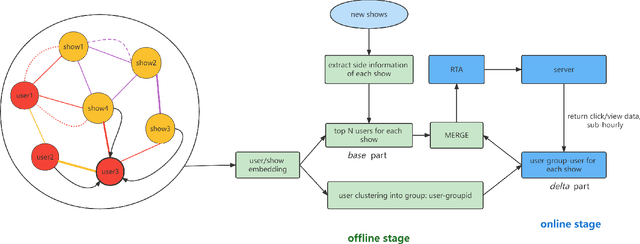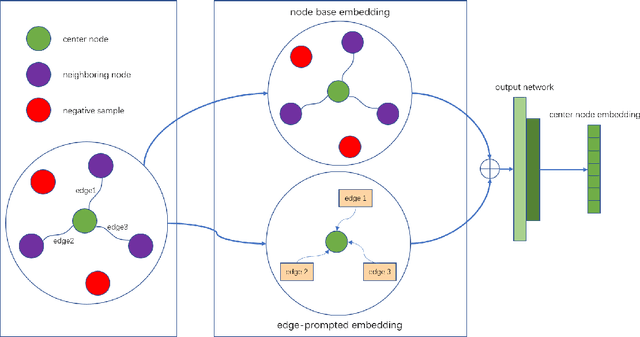Audience Expansion for Multi-show Release Based on an Edge-prompted Heterogeneous Graph Network
Paper and Code
Apr 08, 2023



In the user targeting and expanding of new shows on a video platform, the key point is how their embeddings are generated. It's supposed to be personalized from the perspective of both users and shows. Furthermore, the pursue of both instant (click) and long-time (view time) rewards, and the cold-start problem for new shows bring additional challenges. Such a problem is suitable for processing by heterogeneous graph models, because of the natural graph structure of data. But real-world networks usually have billions of nodes and various types of edges. Few existing methods focus on handling large-scale data and exploiting different types of edges, especially the latter. In this paper, we propose a two-stage audience expansion scheme based on an edge-prompted heterogeneous graph network which can take different double-sided interactions and features into account. In the offline stage, to construct the graph, user IDs and specific side information combinations of the shows are chosen to be the nodes, and click/co-click relations and view time are used to build the edges. Embeddings and clustered user groups are then calculated. When new shows arrive, their embeddings and subsequent matching users can be produced within a consistent space. In the online stage, posterior data including click/view users are employed as seeds to look for similar users. The results on the public datasets and our billion-scale data demonstrate the accuracy and efficiency of our approach.
 Add to Chrome
Add to Chrome Add to Firefox
Add to Firefox Add to Edge
Add to Edge